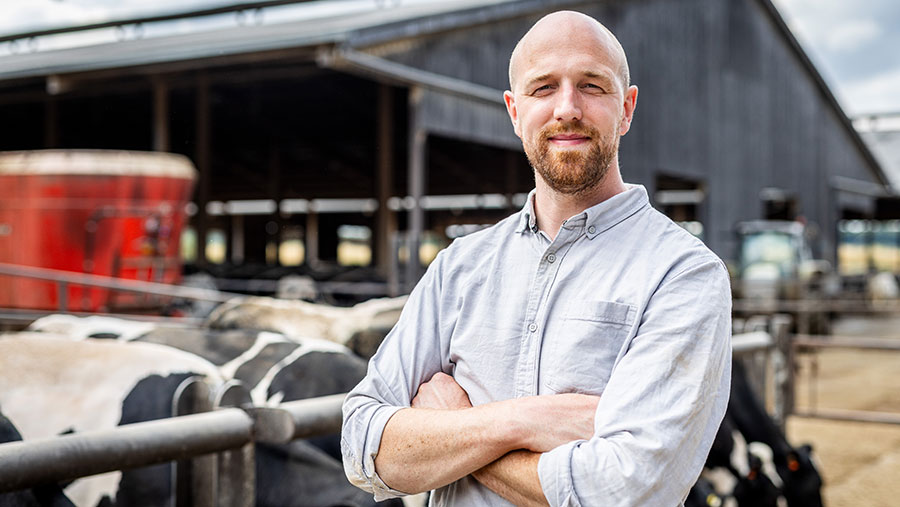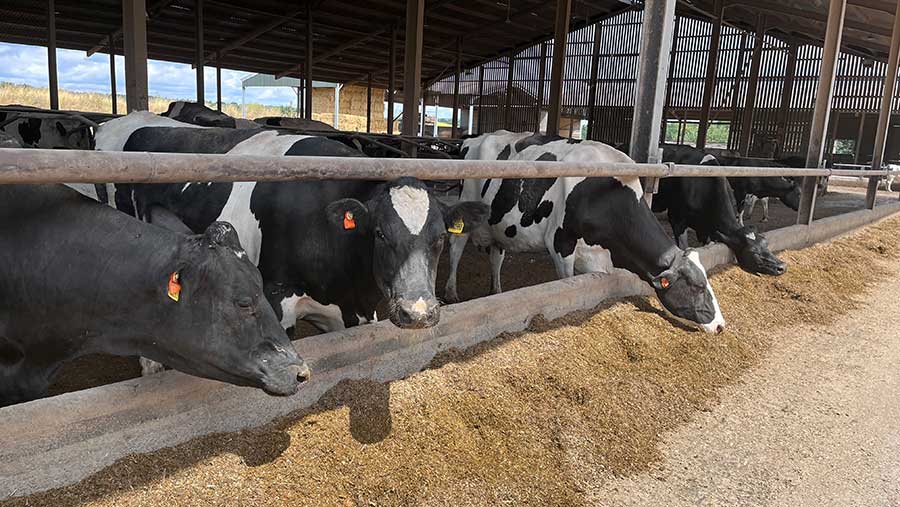Advertiser content
Making sustainability work for the bottom line
Having a clear emissions reduction plan is helping David Bacon make significant impacts into his carbon footprint, identifying priorities while not increasing costs.
Farming at the 480ha Gleadthorpe Farm in Nottinghamshire, David Bacon runs a herd of 550 cows housed all year round and youngstock. The cows average 12,000 litres with milk sold to Sainsbury’s through Muller.
“As a member of the Sainsbury’s Dairy Development Group, the farm is regularly benchmarked and we scored well for greenhouse gas emissions and soil health with a carbon footprint of 0.93 kg CO2e/kg FPCM, placing us at the lower end of the sample,” David commented.
In the scheme they were achieving 56/100 points so there was still room for improvement, but more clarity was needed as to the priority areas he should focus on for his farm.
Trouw Nutrition’s Carbon Reduction Programme Dairy helped him to identify the most beneficial areas to address first.

David Bacon © Trouw Nutrition
It’s not the figure that matters. It’s what you do with it. By using MyMilkPrint digital tool we could look much more closely at the sources of emissions, develop plans to improve and to navigate a pathway to achieve my own carbon reduction and profitability goals.”
The report highlighted the big areas to focus on were the milking diet and youngstock rearing.
Not only were these big carbon contributors, but they are also the two biggest cost centres on dairy farms, giving an opportunity to address the cost base too.
Diet quick wins
In conjunction with his nutritionist, David has increased the use of co-products to replace some of the high emission ingredients.
He has removed soya from the base diet, replacing soya hulls in the PMR with pressed pulp. The net effect has been to reduce the carbon footprint of the diet, which has been a considerable contributor to total emissions as it is fed to 500.
They reduced the carbon footprint of the ration from 18.9 to 14.6 kg CO2e per day, an 18% reduction, and milk yields have marginally increased so have not lost performance in the process.
Overall emissions per litre have been reduced by 25% and on an annual basis they have reduced carbon from feeding cows by over 655 tonnes.
The next steps are to reduce the crude protein content of the overall diet and review the compound feed with the potential to utilise amino acid nutrition. This will improve nitrogen use efficiency and cost of production.

© Trouw Nutrition
Investing in youngstock
For youngstock, the opportunity is to reduce the spread in age at first calving. David admits that while they may average 24 months, this average hid quite a range.
The starting point was to review calf management as they are the most efficient animals on the farm and any ground lost is hard, and expensive financially and environmentally, to make up.
Milk feeding has been increased to 10 litres/day to provide more energy to calves to support better growth and development.
Growing heifers more efficiently is also expected to offer long term benefits such as improving lifetime daily yield and reducing replacement rates. This reduction in herd size, whilst maintaining yield will offer a carbon saving through a dilution effect.
By taking control of his farm’s carbon reduction journey, David Bacon has demonstrated that a whole farm approach can deliver meaningful environmental gains while enhancing efficiency and profitability – putting the power to drive change firmly in the hands of the farmer.
For more information or to contact us, visit the Trouw Nutrition website.
Provided by
We have a 150-year history of dedication to innovation and deep experience in developing smarter and more sustainable ways of raising healthy farm animals and companion animals. Our broad portfolio of feed specialties, feed additives, premixes and nutritional models and services, along with our ever-increasing expertise in feed, farm and health make us a one-stop-shop with limitless opportunities to create tailored, integrated solutions suited to each customer’s local situation. And we are everywhere our customers need us, with a presence in 105 countries. We believe the power of nutrition and good farm management can transform our industry – and even our planet. So, we are challenging how the feed-to-food chain works today, to create a brighter future, from planet to plate.

